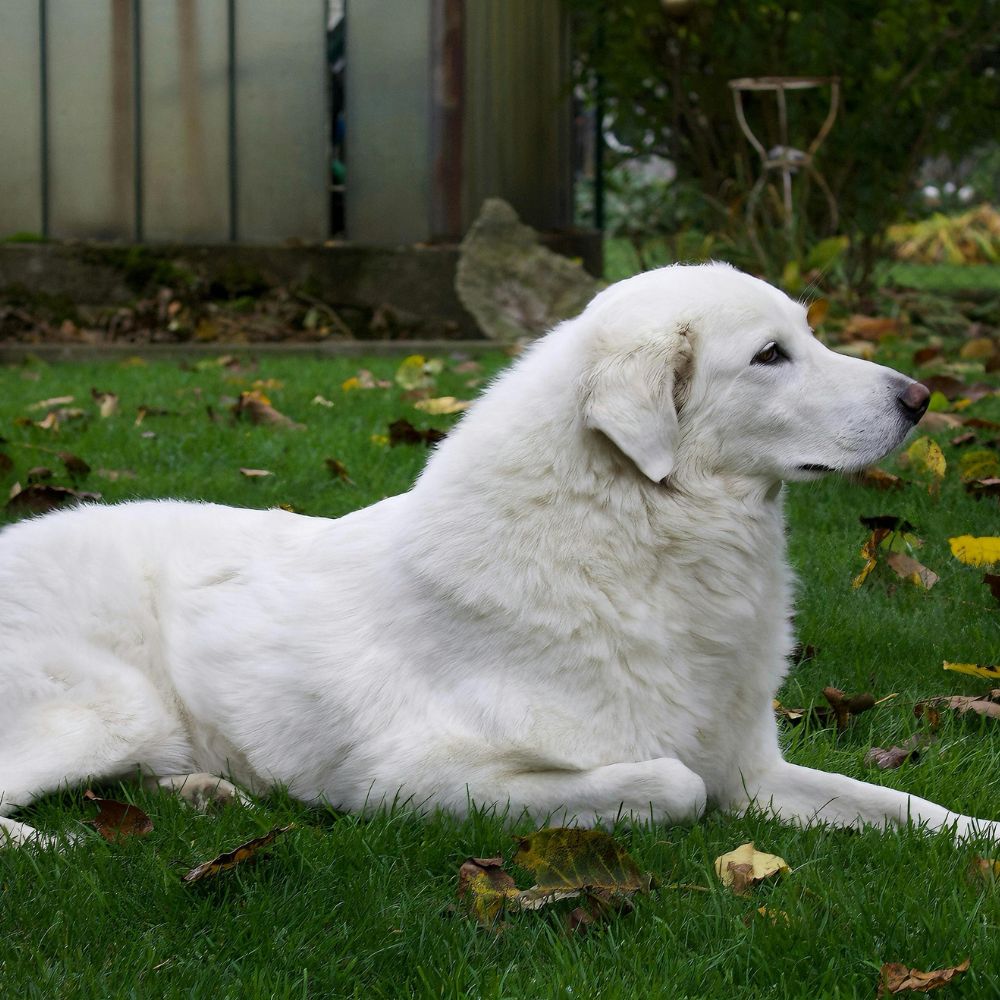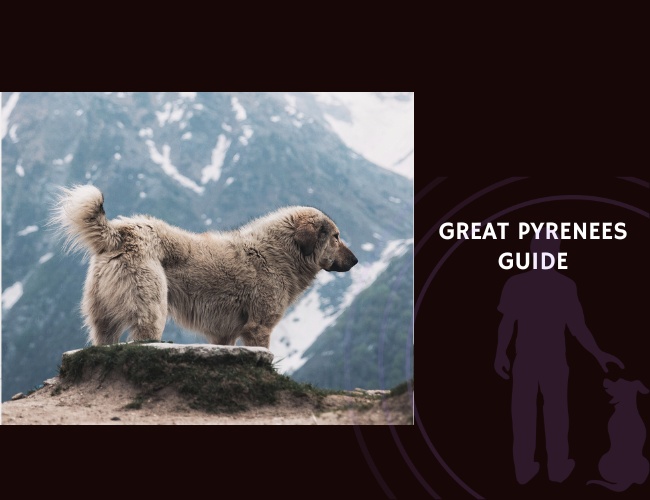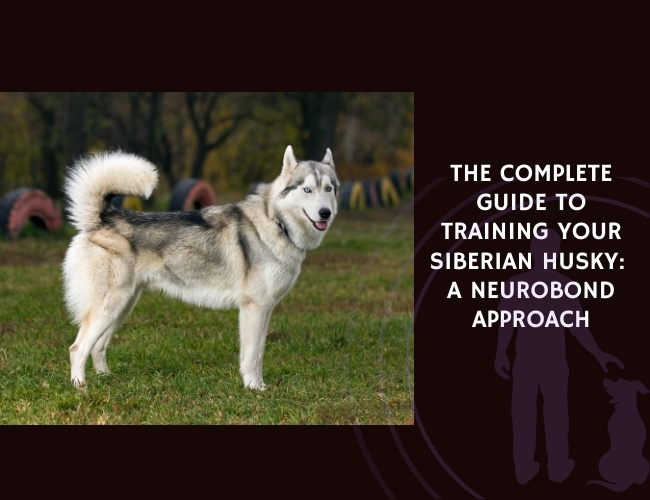Quick Facts about the Great Pyrenees
- Origin: France / Spain (Pyrenees Mountains)
- Weight: 50–60 kg (male), 40–50 kg (female)
- Life expectancy: 10–12 years
- Coat Colour: White (may have markings of grey, badger, reddish brown, or tan)
- Breed Group: Working
The Great Pyrenees is a majestic, large mountain dog known for its calm dignity, protective nature, and thick, weather-resistant white coat. Bred to guard livestock, it combines patience, independence, and quiet strength.
Great Pyrenees History
The Great Pyrenees originated in the Pyrenees Mountains between France and Spain, where it was bred to protect sheep from wolves and other predators. Its history dates back thousands of years, with early references in art and literature from as early as 1000 B.C.
Favoured by French nobility in the 17th century, the breed has long been valued for its regal appearance and fearless guarding ability. Recognised by the AKC in 1933, it remains a popular livestock guardian and devoted family protector.

Great Pyrenees Temperament
Calm, gentle, and confident, the Great Pyrenees is devoted to its family and protective of its territory. It is typically affectionate with children and family members but may be reserved or aloof with strangers.
This breed is independent and may appear stubborn, as it was bred to make decisions on its own in the field. It requires consistent training, patience, and an understanding of its guardian instincts.
Note: The Great Pyrenees tends to bark—especially at night—to alert and deter perceived threats.
Health and wellness
The Great Pyrenees needs daily moderate exercise—walks, patrols, or access to a secure yard are ideal. It doesn’t require intense activity but must have structure and purpose.
Its thick double coat requires regular brushing to prevent matting and manage heavy seasonal shedding. Routine grooming and ear cleaning are essential.
Significant problems:
Hip and elbow dysplasia
Bloat (gastric torsion)
Patellar luxation
Osteosarcoma (bone cancer)
Addison’s disease (rare)
Life expectancy: 10–12 years

The Complete Guide to Great Pyrenees
🔍 Looking to go deeper into dog training?
Use these categories to explore targeted guides and articles on canine behavior, nutrition, obedience, entertainment, and more.








